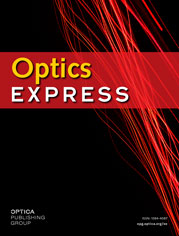It can show objects 2.5 micrometeres in size, 1/3 diameter of a red blood cell. The team thinks in can get it down to .3 micrometres. The endoscope could be used to observe brain activity in minute detail or detect cancer cells. These statements are from a New Scientist article on this.
Our stroke researchers should be salivating on what this could do to see damaged areas in action trying to recover from the stroke. Pie in the sky optimism there since it is unlikely they are reading Optics Express.
But if we had actual stroke leadership I could go to that person and get that knowledge distributed to all stroke researchers and Ph. D candidates.
Resolution limits for imaging through multi-mode fiber
- Optics Express
- Vol. 21,
- Issue 2,
- pp. 1656-1668
- (2013)
- •https://doi.org/10.1364/OE.21.001656
Abstract
We experimentally demonstrate endoscopic imaging through a multi-mode fiber (MMF) in which the number of resolvable image features approaches four times the number of spatial modes per polarization propagating in the fiber. In our method, a sequence of random field patterns is input to the fiber, generating a sequence of random intensity patterns at the output, which are used to sample an object. Reflected power values are returned through the fiber and linear optimization is used to reconstruct an image. The factor-of-four resolution enhancement is due to mixing of modes by the squaring inherent in field-to-intensity conversion. The incoherent point-spread function (PSF) at the center of the fiber output plane is an Airy disk equivalent to the coherent PSF of a conventional diffraction-limited imaging system having a numerical aperture twice that of the fiber. All previous methods for imaging through MMF can only resolve a number of features equal to the number of modes. Most of these methods use localized intensity patterns for sampling the object and use local image reconstruction.©2013 Optical Society of America
Full Article | PDF Article

No comments:
Post a Comment